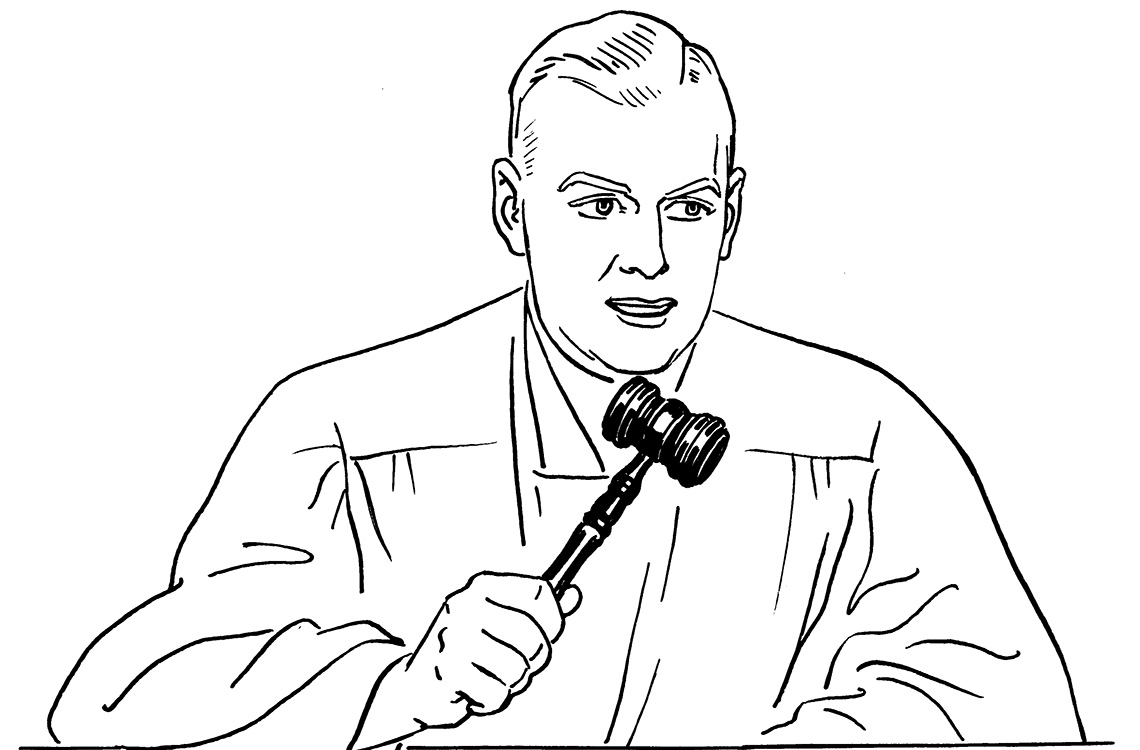You’ve heard of fair use, copyright, and public domain, but how does royalty free content come into the picture? Here’s what you need to know.
Royalty-free content is a class of creative assets that other creators can use in their projects for an agreed-upon fee.
That’s the short of it, but it’s a little stiff. What it comes down to is that content creation doesn’t happen in a vacuum. It’s not uncommon to create content with the help of another piece of content, whether it’s a video clip, a song, or another work of art. When you don’t have the skills or budget to hire someone to create these assets for you, it’s easier to use a piece of content that someone else has already created.
It happens all the time on YouTube, and while you may not be aware of it, big-budget movie productions do it all the time, too. But you can’t just take someone’s work and use it however you want. While copyright laws and their enforcement vary across the world, you should never use someone’s intellectual property without first receiving explicit permission to do so.

In the United States (and worldwide), intellectual property is protected under copyright laws. That gives the original creator, or creators, the right to distribute the copyrighted work. That’s not to say copyrighted works are inaccessible, but there are rules regarding how you can use copyrighted materials.
The History of Copyright
Many types of intellectual property can be protected, but they’re not all protected by the same laws. For example, products and inventions are protected by patent laws; trademark laws protect slogans, company names, and names of products or services. On the other hand, only works of art are protected by copyright laws. That includes traditional works of art like paintings and sculptures, as well as literature, music, photographs, films, video clips, video games, and other works of artistic expression.
Works of art are copyrighted as soon as they are created. If you’re a photographer, your images are protected the moment they are snapped, and the same goes for musicians, videographers, writers, and other artists. The moment you create something, it belongs to you, and it’s yours to do what you wish. In the U.S., for example, copyrighted works are protected for the entirety of the creator’s life, plus 70 years — in other countries, it’s the creator’s life plus 50 years.

However, works created for an employer are considered “works for hire.” In this case, the copyrighted work is owned by the employer and protected for 120 years after its creation — or 95 years after its publication.
Licensing Copyrighted Works
As I mentioned earlier, owners of a copyrighted work can do whatever they want with it. They can choose to keep it all to themselves, they can sell the rights to publish the work in a different medium — this is how films based on books get made — and they can license it.
Licensing is a type of explicit permission in which the licensor and licensee come to a legal understanding regarding the use of the copyrighted work. Licensing costs money, especially if it’s a popular work of art. When parties use copyrighted works without a license, the copyright owner has the right to sue for copyright infringement.

To keep the lawyers at bay, licensing is the way to go. There are a couple of licenses you should know about, each giving you varying levels of access and use of the copyrighted work.
- Rights-managed (R.M.) license — This is a very common license typically used in the publishing/editorial industry. Most importantly, a rights-managed license grants licensees a one-time use of the copyrighted work. If the same image is used a second time for a different purpose, it requires a separate license. Rights-managed licenses can also dictate how the image is used, where in the world it’s used, and for how long. Because these types of licenses can also grant exclusive use of the copyrighted work, they tend to be pricer than other licenses.
- Royalty-free license — You can find these types of licenses on stock websites, which provide assets such as music, video clips, 3D renders, photographs, and more. Stock assets are meant to fill in the gaps for whatever project you’re working on. If you need a song to make a scene more lively or a motion graphic to capture the viewer’s eye, purchasing a stock asset can be cheaper and easier than doing it yourself. Whether you lack the time, equipment, or skill to produce a particular piece of content necessary for your project, stock asset websites more than likely have what you’re looking for — you’d be surprised what you can find on stock asset websites.
Videvo offers stock assets, many of which you can access with a royalty-free license. Royalty-free licenses allow licensees to use a copyrighted work in perpetuity without crediting or paying the original creator ongoing royalties for using the work. This is the opposite of a royalty-based license, in which the licensee pays the licensor a certain amount every time the copyrighted work is used. Music artists, for example, receive royalties whenever one of their songs is played on the radio or used for a movie. But royalty-free licenses mean you only have to pay once to gain access to a copyrighted work — the same goes for free royalty-free assets. After that, you’re mostly free to use the work as you wish, as many times as you wish.

That being said, royalty-free licenses don’t give you the right to claim the work as your own, nor do they give you permission to redistribute the work in its original form on another platform, for free or not. You’re only purchasing a license, not the actual copyrighted work itself. To look at it another way, when you buy a digital copy of a song, movie, book, or video game, you’re not buying the rights to the intellectual property; you’re simply paying for the privilege to view it.
Another thing to note is that not all royalty-free licenses allow works to be used for commercial purposes. In the case of Videvo, there is a distinction between license and usage. The former is what we’ve already discussed, but the latter explicitly states whether the work can be used for commercial purposes.
- Videvo Attribution License — This license is free and, in many ways, similar to a royalty-free license, except it requires attribution to the original creator — this is how to credit the creator properly. While this type of license is free, it’s still a license. You can’t claim the work as your own or redistribute it.
- Creative Commons Attribution 3.0 Unported (CC BY 3.0) license — Creative Commons licenses allow creators to freely distribute their work in exchange for attribution. It’s similar to the Videvo Attribution license. The big difference is that works acquired with a creative commons license can be redistributed in their original form on different platforms. That gives you the right to upload copyrighted works to a platform like Videvo if a Creative Commons license covers it. However, you still can’t sell it or claim it as your own. Additionally, while some versions of the Creative Commons license allow commercial use, those with the “N.C.,” or non-commercial, label are off-limits.
- Public domain license — What happens to a copyrighted work once the copyright runs out? It goes into the public domain, where anyone can freely access, copy, and redistribute it. If you’ve ever wondered why so many shows and movies use classical music, it’s because that music is part of the public domain and, therefore, free to use. Like every other license listed in this article, this also doesn’t give you the right to claim it as your work, but you can sell it.
Publishing companies do it all the time with classical works of literature, which is why you see so many different versions of Frankenstein, The Iliad, The Count of Monte Cristo, and others. And the public domain grows larger with each passing year as copyrighted works expire. Though corporations may try to pressure Congress to extend copyright duration once again, as Disney has done in the past, every work of art eventually joins the public domain.
Fair use
The only legal way to use copyrighted materials without a license is by claiming the Fair Use Doctrine. Fair Use laws are similar around the world, but using language from the U.S. Copyright Office, we learn that using copyrighted works for the purposes of “criticism, comment, news reporting, teaching, scholarship, and research” can be considered fair use. However, using copyrighted works for commercial purposes is not considered fair use. Additionally, the length of the work used, the financial impact of its use, and the nature of its use are also considered when claiming fair use of a copyrighted work.

To be clear, fair use doesn’t give individuals or organizations explicit permission to freely use copyrighted works, but it’s a legal defense used when being sued for copyright infringement. What that means is that any Fair Use claim isn’t solid until tested in court, at which point a judge gets to decide if the claim is valid. However, abiding by the rules and requirements put forth in the Fair Use Doctrine will reduce the chances of ending up in court since copyright owners will be hesitant to sue someone who is coloring inside the lines.
That being said, there can still be issues. One recent example saw a manga and anime reviewer on YouTuber have his videos taken down by a publisher whose work was featured in the videos. That led to a standoff that eventually ended in the YouTuber’s favor because his critiques of the copyrighted works fell within the scope of the Fair Use Doctrine.
In the end, If you’re not sure if fair use applies to your use of a copyrighted work, it probably doesn’t, which means you shouldn’t use it. It’s better to be safe than sorry.
Use Stock Assets
If you don’t want to worry about arcane legal vernacular, it’s worth exploring a stock asset website like Videvo to find what you’re looking for. If you’re a videographer in need of B-roll of exotic locations, a stock video of that location will save you the trip — and the hassle of lugging your equipment on a plane.
Videvo also offers assets like sound effects to spice up your video, motion graphics to make your videos more dynamic, and even templates that can simplify editing your videos on a variety of non-linear editing applications. To top it off, a royalty-free license is budget-friendly and gives you a lot of freedom to create content that matches up with your vision.
Ready to get your hands on some royalty-free assets for your projects? Right this way . . .
Cover image via Wikimedia Commons.




